
Large format sensors (1″, APS, Full Frame, etc.) tend to have slightly larger pixels and seemingly go against the trend of pushing for smaller and smaller pixels. However, this is intentional since the goal of getting “more pixels on the same target area” doesn’t necessarily mean that the image quality is also improving. The larger pixels of large format sensors often have lower noise and better low-light performance and tend to align better with the boundaries of imaging physics and manufacturing tolerances for CMOS lenses.
High-resolution (up to 100MP) lenses provide superior image quality by delivering exceptional clarity and detail, even in high-speed, dynamic environments. These lenses stand out for their ability to produce vivid colors and minimize distortion, ensuring sharp, true-to-life images. Suitable image sensors contain a high pixel count, which enables precise capture of fine textures and intricate elements, enhancing the overall visual experience. Their advanced optical designs reduce aberrations and enhance contrast, providing consistent edge-to-edge performance across various lighting conditions.
Sunex Large Format lenses have a profound impact on total system performance. Their high resolution delivers lifelike imaging, making them essential for cutting-edge sports coverage, dynamic live broadcasts, immersive content capture, cinematic filmmaking and photography, geospatial mapping, teleconferencing, security, and Robotics applications where imaging quality is paramount. These lenses set a new benchmark for high-end professional imaging by delivering unparalleled clarity and detail.
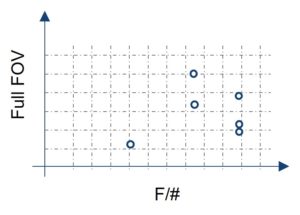
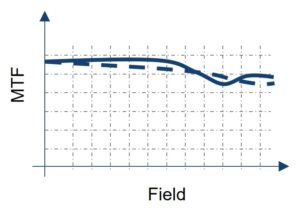
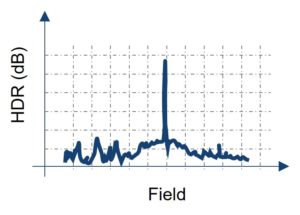
All graphs are for illustration purposes only. The individual lens performance can be different.
Feature Products
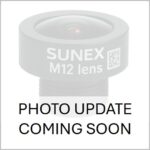
DSL_tbc
200MP, Full Frame, EFL, F/2.8, custom All Glass lens

DSL005
200MP, Full Frame, EFL, F/4, custom All Glass lens
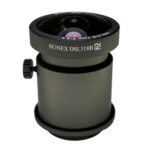
DSL318
10MP, 1″ Format, 7.0mm EFL, F/2.4, CS-Mount lens
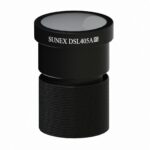
DSL405
20MP, 1″ Format, 8.3mm EFL, F/2.8, M22 Hybrid lens

DSL415
20MP, 1″ Format, 3.3mm EFL, F/2.4, M16, Glass lens
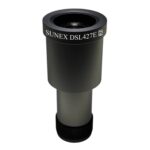
DSL427
8MP, 1″ Format, 18.57mm EFL, F/1.8, C-Mount lens
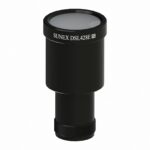
DSL428
8MP, 1″ Format, 9.76mm EFL, F/1.8, C-Mount lens
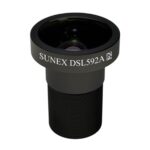
DSL592
20MP, 1″ Format, 5.9mm EFL, F/2.9, M20, Glass lens
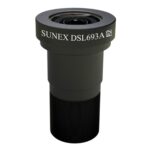
DSL693
20MP, 1″ Format, 9.6mm EFL, F/2.8, M23 Hybrid lens
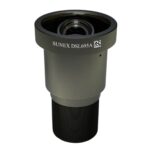
DSL695
20MP, 1″ Format, 9.6mm EFL, F/2.8, M22 Hybrid lens

DSL696
20MP, 1″ Format, 5.0mm EFL, F/2.8, M22 Hybrid lens
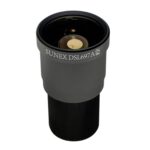
DSL697
20MP, 1″ Format, 7.9mm EFL, F/2.9, M20 All Glass lens
Didn’t find the lens you’re looking for? Try searching for additional 1nch Lenses, view our entire lens database, or use one of the following options:
Additional Topics related to 1INCH(TM) lenses
High Dynamic Range (HDR)
HDR (high dynamic range) sensors can capture light intensity variations up to six or more orders of magnitude within the same image frame (~120db). This puts a very demanding requirement on lens performance. Sunex has developed design expertise, process know-how, and nested cleanroom manufacturing facilities to eliminate or minimize optical noise (such as ghosts, flare, starbursts, spurious images) in lenses for high-performance applications.
Sensor Module Capabilities
Depending on the need and expertise of our customers, we provide design and manufacturing services for a complete sensor module. We strive to find the best solution for your needs, from designing the schematic, creating the PCB layout, and sourcing all components to building according to your PCB design and parts consignment. At Sunex, we have the in-house expertise and capabilities for lens and sensor board design, manufacturing, and testing to deliver a fully tested sensor module.
Active Alignment Capabilities
To achieve the highest system performance when pairing a high-quality lens with a high-resolution sensor, we recommend that our customers consider an active alignment process. Applying a fully automated 6-axis active alignment in mass production increases yield, shortens cycle times, improves system performance, and lowers part-to-part variance.


